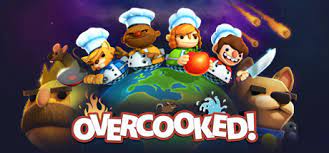Target Audience, Game Name, Creator, Platform
I played Factory Balls Forever, a puzzle game by Bart Bonte, available for free online here. This game is designed for players who enjoy logic-based challenges, problem-solving, and trial-and-error play. It’s approachable for all ages, but especially rewarding for people who like visual-spatial puzzles and pattern-based thinking.
When I first opened Factory Balls, I had a nostalgic wave hit me. I remember playing it as a kid and was so glad to rediscover it. The mechanics are simple: you’re given a blank ball and a target design, and your job is to recreate that pattern by using a set of tools in the correct order. These tools include paints, hats, belts, glasses, and more, and you apply them in layers to match the final design exactly.
What makes this game so engaging is how its mechanics directly shape your experience. The act of solving each puzzle becomes a little lesson in topography and logic. You have to think not only what to do, but also when to do it. The layering matters. If you put a belt on before painting, you’ll get a stripe. But if you paint first and then put a belt on, you might cover the whole thing up. This sequence-based logic is what makes the gameplay feel so mentally satisfying.
From the start, the game grabs you with its simplicity. The early levels are designed to be quick wins. They teach the mechanics while also giving you a rush of success. You feel smart. But it escalates fast. Later levels start really testing your ability to think ahead. You begin experimenting, messing up, restarting, and trying again. This loop of trial-and-error becomes the core of the experience, and it’s where a lot of the fun lives.
There’s something kind of emotional about the game too, a strange mix of curiosity, frustration, and satisfaction. When you solve a tough level, it feels amazing. It almost puts your intelligence on the line but that’s where Factory Balls shines. It makes you laugh at your mistakes and want to keep going. That emotional dynamic is a result of great design. The aesthetics of the game (MDA) include challenge, submission, and even discovery. The mechanics are so clean and intuitive that they disappear, letting you focus entirely on solving the problem.
Compared to other puzzle games, like word games or logic grid puzzles, Factory Balls is totally visual. You don’t need to know any vocabulary or math. It’s more like sculpture than Sudoku. That makes it very inclusive in terms of type of intelligence, but it also brings up some ethical questions about accessibility.
Ethics: Who Gets to Play?
Factory Balls avoids some of the major ethical pitfalls that other puzzle games fall into. For example, many word-based puzzles rely on specific cultural knowledge or language fluency. Crossword puzzles, trivia-based games, or riddles often assume you grew up with a particular set of references, which can be very exclusionary. In contrast, Factory Balls focuses on visual logic, layering, and cause-and-effect, which are more universal.

That said, there are still a few important things to consider. First, the game relies heavily on color like shown in image above, which could make it difficult for colorblind players. There are no color labels or alternative visual cues, which is a design oversight. Also, the game assumes some level of spatial reasoning and layering logic, which isn’t necessarily taught or developed equally across educational backgrounds. If you’ve never done painting, craft work, or digital art, some of the logic might feel foreign.
But overall, I think Factory Balls is an example of how puzzle games can lean into learning rather than gatekeeping. Even if you don’t understand the logic at first, the game encourages experimentation. It doesn’t punish you for getting things wrong, it just lets you reset and try again. This soft failure system makes it more ethical and inclusive because it allows space for growth rather than requiring prior knowledge.


